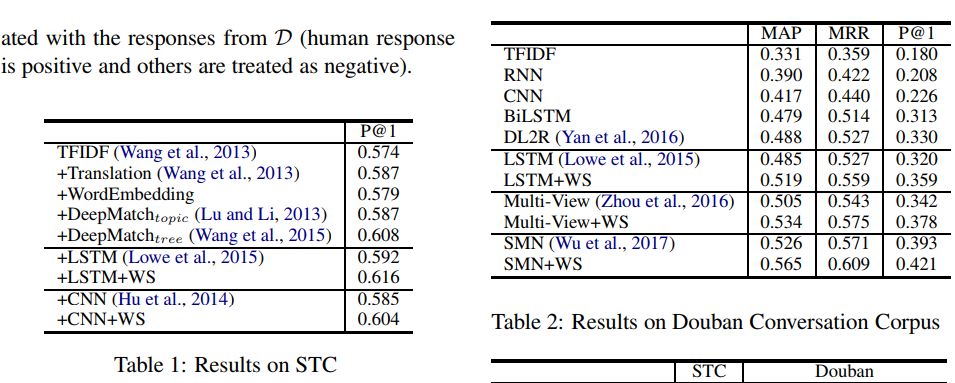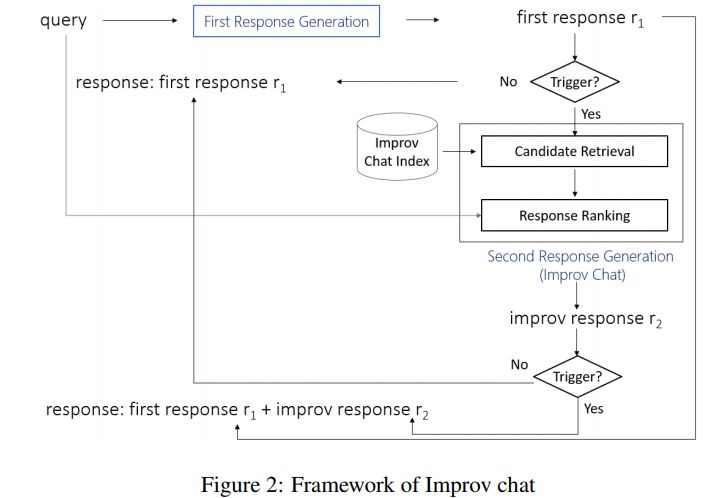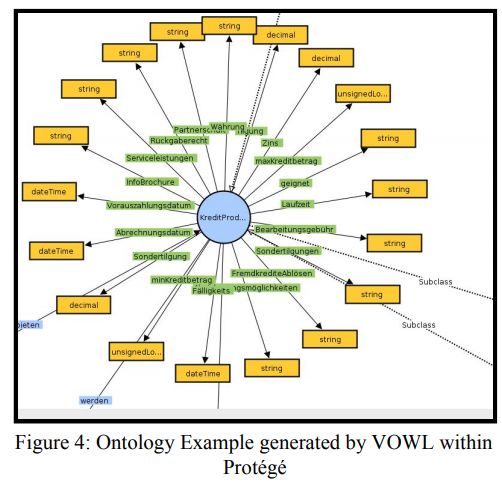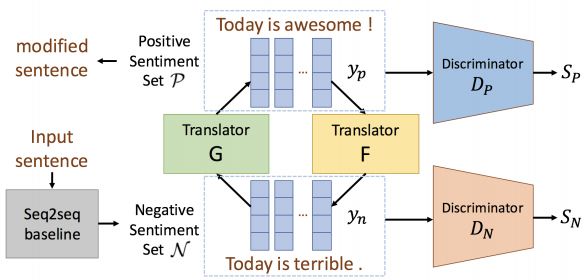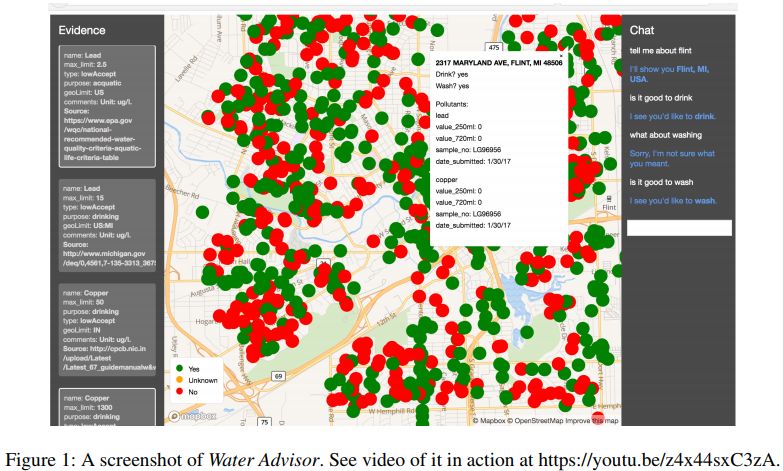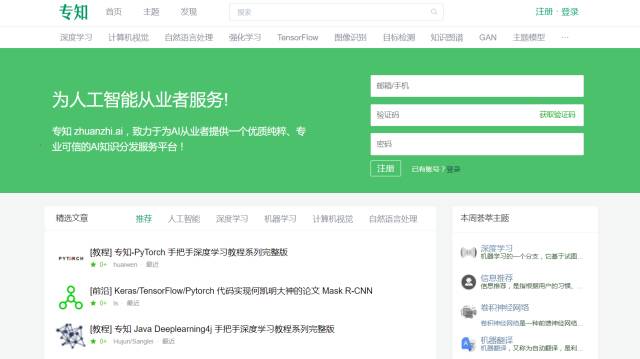【论文推荐】最新六篇聊天机器人相关论文—弱监督信息、内容驱动、对话管理系统、可扩展情感序列到序列、自主性
【导读】专知内容组整理了最近六篇聊天机器人(Chatbot)相关文章,为大家进行介绍,欢迎查看!
1. Learning Matching Models with Weak Supervision for Response Selection in Retrieval-based Chatbots(利用弱监督信息学习匹配模型以实现基于检索的聊天机器人的响应选择)
作者:Yu Wu,Wei Wu,Zhoujun Li,Ming Zhou
accepted by ACL 2018 as a short paper
机构:Beihang University, Microsoft Research
摘要:We propose a method that can leverage unlabeled data to learn a matching model for response selection in retrieval-based chatbots. The method employs a sequence-to-sequence architecture (Seq2Seq) model as a weak annotator to judge the matching degree of unlabeled pairs, and then performs learning with both the weak signals and the unlabeled data. Experimental results on two public data sets indicate that matching models get significant improvements when they are learned with the proposed method.
期刊:arXiv, 2018年5月7日
网址:
http://www.zhuanzhi.ai/document/c08d5aaf08a1e82547380d311740afc5
2. Sounding Board: A User-Centric and Content-Driven Social Chatbot(Sounding Board:用户为中心内容驱动的社交聊天机器人)
作者:Hao Fang,Hao Cheng,Maarten Sap,Elizabeth Clark,Ari Holtzman,Yejin Choi,Noah A. Smith,Mari Ostendorf
NAACL 2018
机构:University of Washington
摘要:We present Sounding Board, a social chatbot that won the 2017 Amazon Alexa Prize. The system architecture consists of several components including spoken language processing, dialogue management, language generation, and content management, with emphasis on user-centric and content-driven design. We also share insights gained from large-scale online logs based on 160,000 conversations with real-world users.
期刊:arXiv, 2018年4月26日
网址:
http://www.zhuanzhi.ai/document/f472bfcd8af4449a5213d8e50a2bccfd
3. Improv Chat: Second Response Generation for Chatbot
作者:Furu Wei
机构:Microsoft Research Asia
摘要:Existing research on response generation for chatbot focuses on \textbf{First Response Generation} which aims to teach the chatbot to say the first response (e.g. a sentence) appropriate to the conversation context (e.g. the user's query). In this paper, we introduce a new task \textbf{Second Response Generation}, termed as Improv chat, which aims to teach the chatbot to say the second response after saying the first response with respect the conversation context, so as to lighten the burden on the user to keep the conversation going. Specifically, we propose a general learning based framework and develop a retrieval based system which can generate the second responses with the users' query and the chatbot's first response as input. We present the approach to building the conversation corpus for Improv chat from public forums and social networks, as well as the neural networks based models for response matching and ranking. We include the preliminary experiments and results in this paper. This work could be further advanced with better deep matching models for retrieval base systems or generative models for generation based systems as well as extensive evaluations in real-life applications.
期刊:arXiv, 2018年5月10日
网址:
http://www.zhuanzhi.ai/document/02208768d2bbeb287f103e33466ee06c
4. An Ontology-Based Dialogue Management System for Banking and Finance Dialogue Systems(用于银行和金融对话的基于本体的对话管理系统)
作者:Duygu Altinok
机构:4Com Innovation Center
摘要:Keeping the dialogue state in dialogue systems is a notoriously difficult task. We introduce an ontology-based dialogue manage(OntoDM), a dialogue manager that keeps the state of the conversation, provides a basis for anaphora resolution and drives the conversation via domain ontologies. The banking and finance area promises great potential for disambiguating the context via a rich set of products and specificity of proper nouns, named entities and verbs. We used ontologies both as a knowledge base and a basis for the dialogue manager; the knowledge base component and dialogue manager components coalesce in a sense. Domain knowledge is used to track Entities of Interest, i.e. nodes (classes) of the ontology which happen to be products and services. In this way we also introduced conversation memory and attention in a sense. We finely blended linguistic methods, domain-driven keyword ranking and domain ontologies to create ways of domain-driven conversation. Proposed framework is used in our in-house German language banking and finance chatbots. General challenges of German language processing and finance-banking domain chatbot language models and lexicons are also introduced. This work is still in progress, hence no success metrics have been introduced yet.
期刊:arXiv, 2018年4月13日
网址:
http://www.zhuanzhi.ai/document/84d12f7e1fd1910373748ea1c5bde87f
5. Scalable Sentiment for Sequence-to-sequence Chatbot Response with Performance Analysis(基于可扩展情感序列到序列聊天机器人响应的性能分析)
作者:Chih-Wei Lee,Yau-Shian Wang,Tsung-Yuan Hsu,Kuan-Yu Chen,Hung-Yi Lee,Lin-shan Lee
机构:National Taiwan University
摘要:Conventional seq2seq chatbot models only try to find the sentences with the highest probabilities conditioned on the input sequences, without considering the sentiment of the output sentences. Some research works trying to modify the sentiment of the output sequences were reported. In this paper, we propose five models to scale or adjust the sentiment of the chatbot response: persona-based model, reinforcement learning, plug and play model, sentiment transformation network and cycleGAN, all based on the conventional seq2seq model. We also develop two evaluation metrics to estimate if the responses are reasonable given the input. These metrics together with other two popularly used metrics were used to analyze the performance of the five proposed models on different aspects, and reinforcement learning and cycleGAN were shown to be very attractive. The evaluation metrics were also found to be well correlated with human evaluation.
期刊:arXiv, 2018年4月7日
网址:
http://www.zhuanzhi.ai/document/4d8fffd30b46c6945ea8bc2682c2527b
6. On Chatbots Exhibiting Goal-Directed Autonomy in Dynamic Environments(动态环境中聊天机器人如何展示面向目标的自主性)
作者:Biplav Srivastava
机构:IBM Research
摘要:Conversation interfaces (CIs), or chatbots, are a popular form of intelligent agents that engage humans in task-oriented or informal conversation. In this position paper and demonstration, we argue that chatbots working in dynamic environments, like with sensor data, can not only serve as a promising platform to research issues at the intersection of learning, reasoning, representation and execution for goal-directed autonomy; but also handle non-trivial business applications. We explore the underlying issues in the context of Water Advisor, a preliminary multi-modal conversation system that can access and explain water quality data.
期刊:arXiv, 2018年3月27日
网址:
http://www.zhuanzhi.ai/document/441588db5c34c07e5584affd0c319b24
-END-
专 · 知
人工智能领域主题知识资料查看与加入专知人工智能服务群:
【专知AI服务计划】专知AI知识技术服务会员群加入与人工智能领域26个主题知识资料全集获取
点击上面图片加入会员
请PC登录www.zhuanzhi.ai或者点击阅读原文,注册登录专知,获取更多AI知识资料!
请扫一扫如下二维码关注我们的公众号,获取人工智能的专业知识!
点击“阅读原文”,使用专知
